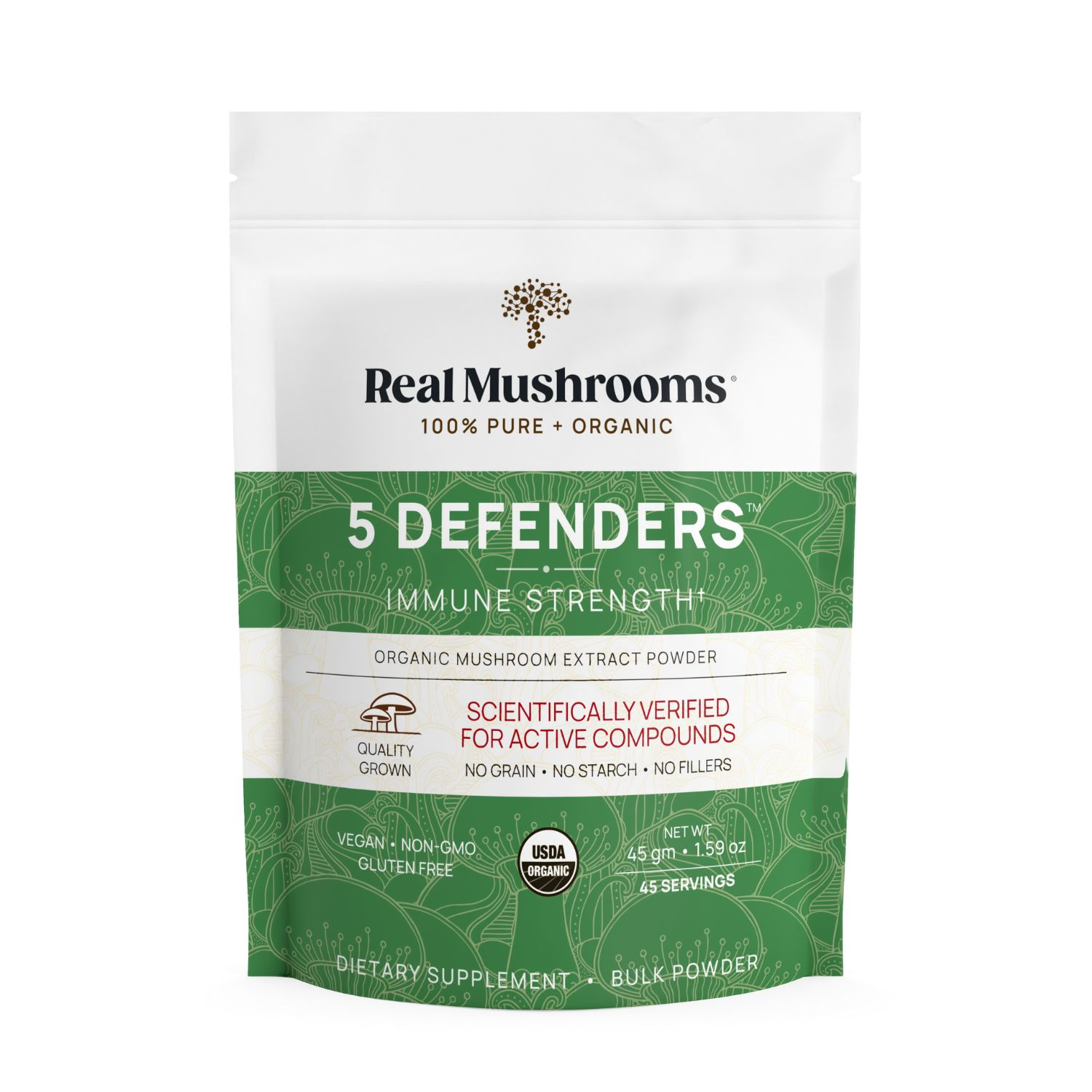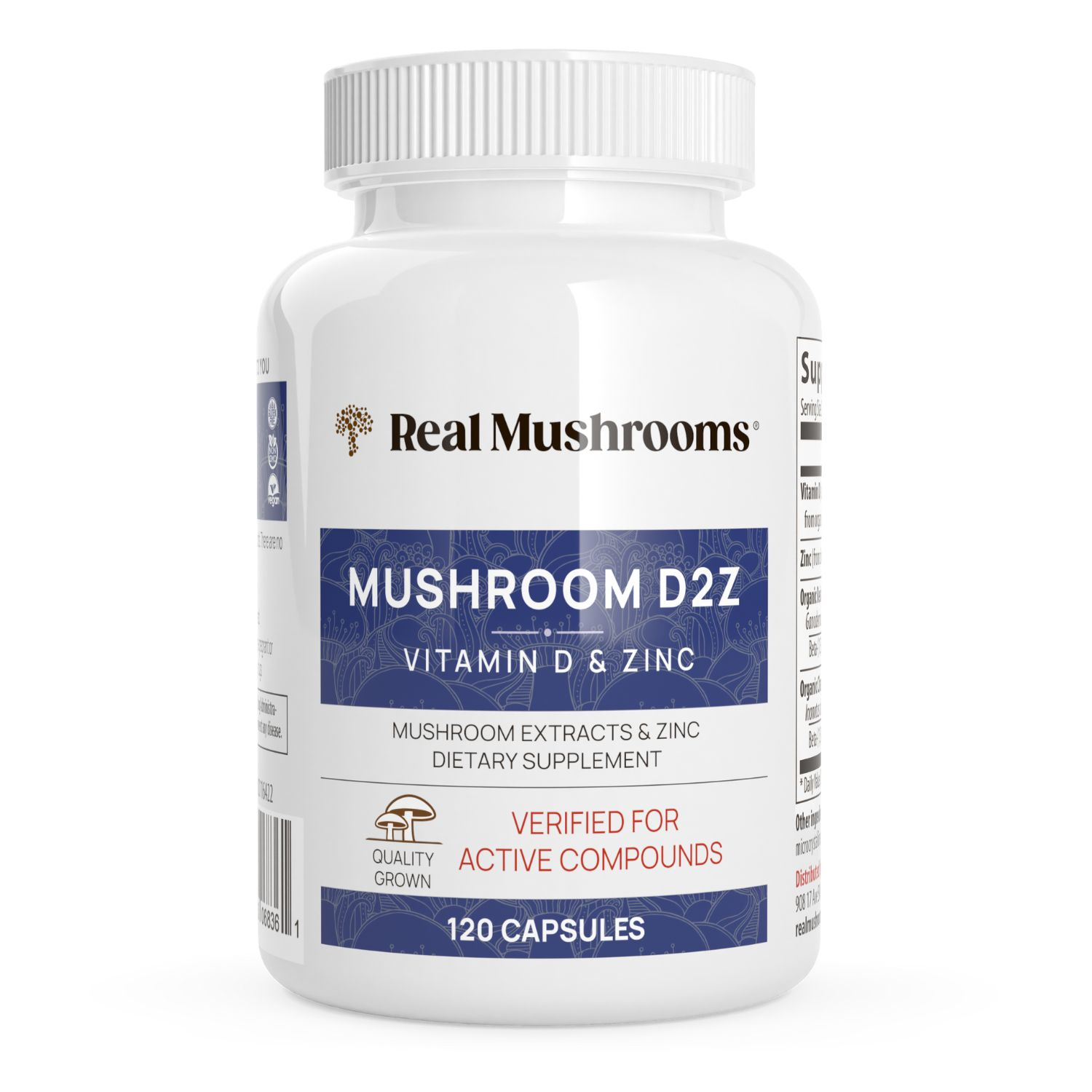Mushroom Scientific Names: A Guide for Enthusiasts
10 minute read

Mushroom scientific names, also known as binomial nomenclature, are essential for accurately identifying and classifying mushroom species.
This guide aims to give enthusiasts a comprehensive understanding of the formation, importance, usage, and tips to learn and remember mushroom scientific names.
By exploring the frequently asked questions surrounding mushroom scientific names, readers will gain valuable information and insights into the world of mycology. This includes understanding the significance of proper terminology in identifying both edible and poisonous mushrooms.
In This Article
- Why Do Mushrooms Have Scientific Names?
- Benefits of Using Mushroom Scientific Names
- How Are Scientific Names Different from Common Names?
- How Are Mushroom Scientific Names Formed?
- Who Decides the Scientific Names of Mushrooms?
- Process of Naming a New Mushroom Species
- Do All Mushrooms Have a Scientific Name?
- Efforts to Document Mushroom Diversity
- Understanding the Mushroom: A Key to Mushroom Identification
Why Do Mushrooms Have Scientific Names?
Mushrooms have scientific names to provide a standardized and universally accepted identification and classification method. This system, known as binomial nomenclature, was developed by Carl Linnaeus in the 18th century and is used across all forms of life, including fungi.
Scientific names are essential for several reasons:
Precision and Clarity

Scientific names eliminate the ambiguity that often accompanies commonly used names. For example, the common name "puffball" can refer to multiple species of mushrooms, but the scientific name Lycoperdon perlatum refers to a specific species with distinct characteristics, including its stem and cap structure. <1>
This precision is crucial for proper mushroom identification, particularly when dealing with wild mushrooms, where some can be poisonous.
Universal Language
Scientific names are used globally, allowing scientists and enthusiasts from different countries and language backgrounds to communicate clearly and effectively. This universality is crucial for research, conservation, and education, particularly when studying wild mushrooms across different regions.
Taxonomic Classification
Scientific names reflect the taxonomic hierarchy and evolutionary relationships among species. The name Agaricus bisporus, for example, indicates that this species belongs to the genus Agaricus and is distinct from other genera within the same family.
Understanding this taxonomy hierarchy helps identify the fungus' fruiting body (the mushroom), which can vary significantly between species.
Avoiding Synonyms and Homonyms

Common names can vary widely and sometimes overlap, leading to confusion. Scientific names help avoid this issue by providing a single, accepted name for each species.
For example, the mushroom known as "chicken of the woods" can refer to both Laetiporus sulphureus and Laetiporus cincinnatus, but their scientific names clearly distinguish them. <2>
Research and Documentation
Accurate scientific names are vital for the documentation and study of mushrooms. They ensure that research findings are correctly attributed to the right species, which is essential for scientific accuracy and reproducibility.
This is particularly important when studying the effects of spores and the role of fungi in ecosystems. Spores, the reproductive anatomy of fungi, are crucial for dispersal and survival in harsh conditions. They contribute to nutrient cycling and decomposition, highlighting fungi's essential role in maintaining ecological balance.
Conservation Efforts
Proper identification through scientific names is critical for conservation. Knowing the exact species helps in assessing its conservation status, understanding its ecological role, and implementing appropriate protection measures, particularly for endangered or rare wild mushrooms.
Did You Know? Many scientific names are derived from Latin or Greek, providing insights into the organism's characteristics. For example, leptocephalus means "slender head," indicating a specific trait of the organism.
Benefits of Using Mushroom Scientific Name
Consistency
Scientific names remain consistent across different regions and languages, unlike commonly used names, which can vary widely. This consistency is essential for accurately identifying a fungus species in diverse habitats and during different seasons.
Specificity

They provide a specific identifier for each species, reducing the risk of misidentification, which is crucial when distinguishing between edible and poisonous mushrooms.
Some scientific names reflect the physical characteristics of the species that differentiate it from other mushrooms. For example, the Russula species known as xerampelina reflects its deep red-brown cap color. Xerampelina means “color of dried vine leaves” in ancient Greek.
Historical Record
Scientific names often include information about the discoverer or the characteristics of the species, providing historical and descriptive context.
For example, Boletus Barowsii is named for the amateur mycologist, Charles "Chuck" Barrows, who collected the specimen that was studied by mycologists and discovered to be a distinctive and previously un-documented bolete species.
Assigning and using scientific names for mushrooms is a fundamental practice in mycology that supports clear communication, helps scientists learn about new species, and aids in accurate identification, effective research, and conservation efforts.
How Are Scientific Names Different from Common Names?
Scientific names and common names serve different purposes and have distinct characteristics. Understanding these differences is crucial for accurate communication and identification in mycology.
Standardization
- Scientific Names: These are standardized and universally accepted. They follow a binomial nomenclature system, which includes the genus and species names.
- Common Names: These can vary widely between regions and languages. A single species may have multiple names, leading to potential confusion.
Precision
- Scientific Names: Provide precise identification. Each scientific name is unique to a single species, ensuring clarity and reducing ambiguity, which is particularly important when identifying wild mushrooms.
- Common Names: Often less precise. Different species may share the same common name, and a single species may be known by different names in different areas.
Usage
- Scientific Names: Primarily used in scientific literature, research, and formal documentation. They are essential for accurate communication among scientists globally.
- Common Names: These are more commonly used in everyday language by foragers, hobbyists, and the general public. They are easier to remember and pronounce.

Regional Variations
- Common Names: Can differ significantly even within the same language. For example, Boletus edulis is known as "cèpe" in French-speaking regions, "Porcini" in Italy and other European regions, and “king bolete” in English-speaking regions.
- Scientific Names: Remain consistent across all regions, providing a universal language for mycologists and researchers.
Etymology
- Scientific Names: Often descriptive, indicating characteristics such as color, shape, or habitat. For instance, Pleurotus ostreatus (Oyster Mushroom) derives from the Latin words "pleuro" (side) and "otus" (ear), referring to its shape. <3>
- Common Names: May be based on appearance, taste, or local folklore. For example, the Fly Agaric (Amanita muscaria) is named for its historical use in fly traps.
How Are Mushroom Scientific Names Formed?
Binomial nomenclature is a formal system of naming species of living organisms by giving each a name composed of two parts. Both parts use Latin grammatical forms, although they can be based on words from other languages.
The two parts of a binomial name are:
- Genus Name: This is the first part of the name and is always capitalized. It denotes the broader group to which the species belongs. For example, in Agaricus bisporus, Agaricus is the genus name.
- Species Epithet: This is the second part of the name and is not capitalized. It identifies the specific species within the genus. In the example Agaricus bisporus, bisporus is the species epithet.
Rules of Binomial Nomenclature
- Italicization: Both parts of the binomial name are usually italicized when typed and underlined when handwritten.
- Latin or Latinized Form: The names are typically Latin or Latinized versions of words from other languages.
- Uniqueness: Each species name is unique within the genus but can be reused in different genera.
Binomial nomenclature is a critical tool in the field of mycology, aiding in the accurate identification and classification of mushrooms. It ensures that each species has a unique and standardized name, which is essential for scientific research and documentation.
Who Decides the Scientific Names of Mushrooms?
Like other organisms, mushrooms are scientifically named using a standardized system of binomial nomenclature. This system is governed by rules and guidelines established by international bodies to ensure consistency and accuracy in the naming process.
International Code of Nomenclature for Algae, Fungi, and Plants (ICNafp)
The primary set of rules for naming fungi, including mushrooms, is outlined in the ICNafp. This code is periodically updated during the International Botanical Congress, which convenes every six years.
Mycological Societies
Various mycological societies worldwide, such as the Mycological Society of America and the British Mycological Society, play a significant role in the naming process. These organizations often publish journals and bulletins that name and describe newly identified species.
Taxonomists and Mycologists
Individual scientists specializing in the study of fungi, known as mycologists, are responsible for the discovery and formal description of new species. These experts conduct extensive research, including field studies and laboratory analyses, to identify and classify new mushrooms.
Process of Naming a New Mushroom Species
- Discovery: The process begins with discovering a potentially new mushroom species. This can occur during field expeditions, ecological surveys, or even by amateur mushroom enthusiasts.
- Collection and Documentation: The discovered specimen is collected and meticulously documented. This includes noting its habitats, physical characteristics, and unique features distinguishing it from known species.
- Research and Analysis: The specimen undergoes thorough research and analysis, often involving microscopic examination and genetic sequencing. This step is crucial to determine whether the mushroom is a new species or a variation of an existing one.
- Publication: Once the research is complete, the findings are compiled into a formal description and submitted to a peer-reviewed scientific journal. The description must include the proposed scientific name, detailed morphological characteristics, and comparisons with similar species.
- Peer Review and Acceptance: The description submitted undergoes peer review by other experts in the field. If the new species is validated, the name is officially accepted and published.
Fungal Updates: The Shenzhen Code, established in 2017, is the current standard for naming algae, fungi, and plants. It added a chapter specifically for fungi and updated the rules for electronic publication, recognizing the increasing significance of mycology and digital platforms in scientific naming.
Do All Mushrooms Have a Scientific Name?
Not all mushrooms have a scientific name. The discovery and naming of new mushroom species is ongoing, and many species remain undocumented or unnamed. Several factors contribute to this situation:
Undiscovered Species
Many mushroom species have yet to be discovered, especially in remote or less-studied regions. Mycologists estimate that only a minute fraction of the world's fungal diversity has been described.
The estimated number of fungal species is much higher than the 146,155 species identified so far — this accounts for only 1.2% to 14.6% of the potential total.
Each year, about 2,000 new species are described. This number that has increased over the past decade due to advances in molecular techniques for identifying and classifying species. However, at this current pace, it will take many generations to catalog and understand the vast diversity of fungi fully. <4>
Taxonomic Challenges
Identifying and classifying mushrooms can be complex due to their diverse morphologies and life cycles. Some species are cryptic, meaning they look very similar to others, making it difficult to distinguish them without genetic analysis.
Resource Limitations
The process of naming a new species requires extensive research, including field studies, laboratory work, and peer-reviewed publications. Limited funding and resources can slow the rate at which new species are described.
Changes in Classification
Advances in molecular biology and genetic sequencing have led to the reclassification of many species. As a result, some mushrooms previously thought to be distinct species are now recognized as variations of a single species, while others are split into multiple species.
Other Challenges
- Field Identification: Collecting specimens in the field can be challenging due to mushrooms' ephemeral nature. Some species only appear under specific environmental conditions.
- Laboratory Analysis: Detailed morphological and genetic analyses are required to accurately describe a new species. This often involves comparing the new specimen with existing collections in herbaria and databases.
- Publication Process: Naming a new species involves publishing the findings in a scientific journal, which requires peer review and adherence to the International Code of Nomenclature for Algae, Fungi, and Plants.
Efforts to Document Mushroom Diversity
- Citizen Science: Amateur mycologists and citizen scientists play a crucial role in discovering new species. Different online platforms allow enthusiasts to share their findings with the scientific community.
- International Collaboration: Mycologists worldwide collaborate to document and describe new species. Initiatives like the Global Fungal Red List aim to assess and protect fungal diversity. This global effort seeks to identify and document endangered fungal species, raising awareness about fungi's critical role in ecosystems.
- Technological Advances: DNA barcoding and other molecular techniques have revolutionized the field of mycology, enabling more accurate identification and classification of species. <5>
While not all mushrooms currently have a scientific name, ongoing research and technological advancements continue to expand our understanding of fungal diversity.
Understanding the Mushroom: A Key to Mushroom Identification
In the world of mycology, it's important to understand the term "mushroom."
The mushroom is the visible part we recognize, it is the fruiting body of the fungus that emerges from the substrate it grows on (such as dead wood, earth, or grain). This structure releases spores for reproduction. Underlying the mushroom is a network of root-like structures called mycelium. Only once the mycelium of certain fungi come together and begin producing a spore-releasing body can we visually identify the type of mushroom in question. Not all types of fungi produce mushrooms.
The mushroom, not the mycelium or the spores, has the greatest concentration of beneficial compounds, like beta-glucans and triterpenes, that contribute to many of the health benefits of mushrooms. <6>
Real Mushrooms uses only 100% mushrooms, to ensure maximum potency, purity, and effectiveness in the mushroom extract products we offer for health maintenance. Explore our selection of mushroom supplements to experience these health benefits firsthand.

Related Articles
- Mushroom Anatomy: A Deep Dive Into the Parts of a Mushroom
- Red Mushroom Roundup: 4 Varieties From Edible to Deadly
- Edible Wild Mushrooms: 2 Categories & Their Benefits
References
- Emberger, G. (2008). Lycoperdon perlatum. Available at: https://www.messiah.edu/Oakes/fungi_on_wood/puffball%20and%20cushion/species%20pages/Lycoperdon%20perlatum.htm
- Benitez, B. (2020) ‘Chicken of the Woods (Laetiporus sulphureus species complex)’, Pathology Department, UF/IFAS Extension
, (PP358). - Emberger, G. (2008). Pleurotus spp. Available at: https://www.messiah.edu/Oakes/fungi_on_wood/gilled%20fungi/species%20pages/Pleurotus%20spp.htm
- Lofgren, L.A. and Stajich, J.E. (2021) ‘Fungal Biodiversity and Conservation Mycology in light of new technology, Big Data, and changing attitudes’, Current Biology, 31(19). doi:10.1016/j.cub.2021.06.083.
- Liao, H.-L. (2022) D.I.Y. FunGuide: Grow your own oyster mushrooms at home, Ask IFAS . Available at: https://edis.ifas.ufl.edu/publication/SS662.
- Scientific Research & Medicinal Fungi (2023) North American Mycological Association. Available at: https://namyco.org/scientific-research-medicinal-fungi/





























